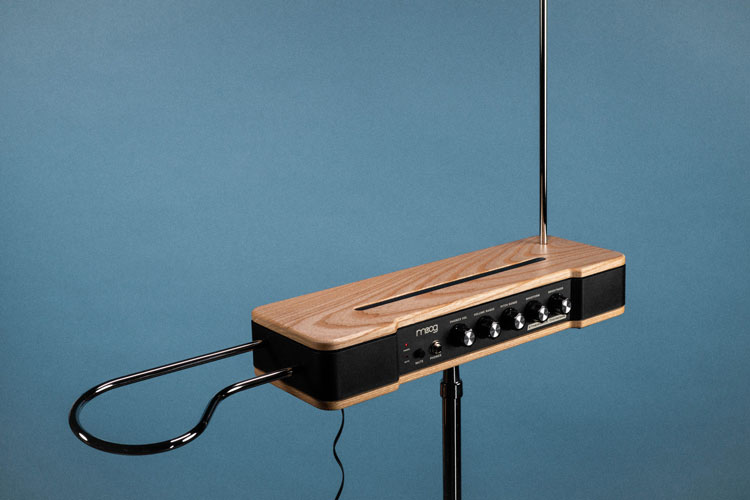(headline image: Moog Etherwave Theremin)
The theremin is an electronic musical instrument operated without physical contact by the theremin player. It is named after its inventor, Leon Theremin, who patented the device in 1928.
The theremin is controlled by moving one’s hands in the air in the proximity of two metal antennas: one exists to determine pitch and the other determines the volume. Higher notes are played by moving the hand closer to the pitch antenna, while louder notes are played by moving the hand away from the volume antenna. The electric signals from the theremin are amplified and sent to a loudspeaker.
Throughout history, theminists have achieved extraordinary expression by mastering this unique connection between the hands, the body, the environment, and the instrument.
The sound of the theremin is frequently associated with eerie settings. For example, the theremin has been used in movie soundtracks such as Miklós Rózsa‘s ‘Spellbound’ and ‘The Lost Weekend’, Bernard Herrmann‘s ‘The Day the Earth Stood Still’, and Justin Hurwitz’s ‘First Man’, as well as in theme songs for television shows such as the ITV drama ‘Midsomer Murders’ and the Disney+ series ‘Loki’.
The theremin is also used in concert music (especially avant-garde music), and in popular music genres such as rock.
The theremin’s well-designed simplicity and inherently expressive nature caught the attention of Bob Moog, founder of Moog Music and inventor of the Moog modular synthesizer, at an early age. Bob Moog’s lifelong passion for theremin began with the assembly of his first theremin at age 14 and concluded with his final theremin design: the original Etherwave. Currently, the legacy of the Moog theremin continues inside the employee-owned company’s Asheville, North Carolina factory with the hand-built production of Etherwave Theremin.

